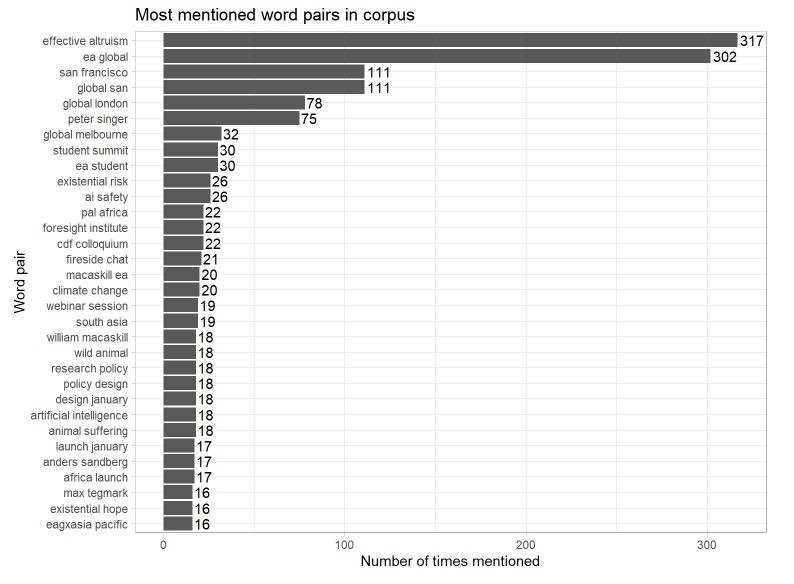I created a google sheet with titles and links for over 1900 EA videos (There are 2000+ listed but some are duplicates) . It took ~4 hours in total including this post.

How I did it
- Installed the data miner plugin
- Scraped (i.e., extracted) the links from this post and categorized them as suggested
- Searched on YouTube for EA videos and scraped some of those
- Did some fiddling around to get the URLS working properly
- Deduplicated the URLs
What you might use the sheet for
- Finding videos quickly. This sheet seems like one of the quickest and easiest ways to find videos for social media posts, website, groups meetings, conferences, entertainment etc. Just search (ctrl-F) for a person or term and then see the various options.
- Creating a YouTube playlist for your entertainment or education. For example, I plan to make a copy of the sheet and use it to watch and mark off all the videos on various topics that I want to learn more about.
- Curating videos better. I'd love if someone used this to create a website/database with filtering based by rating/quality/type/length etc. I'd like to be able to find the short animated videos or best rated videos for different areas.
How to add more videos
Just add them to this sheet and I will move them over when I get time. Note that it is very easy to scrape a whole channel or playlist with the data miner plugin.
Future plans
I am happy to occasionally add videos and also to find and promote particularly good ones but it won’t be a priority for me. If anyone wants to make this their project then let me know and I can give you full ownership.
Analysis of text data
Alexander Saeri did an analysis of the text data for the video (see below of example output). It might be worth a look if you are curious about the distribution of video topics within the list.

You can download it here (open in a browser)
Credit
My small task was greatly helped and partially inspired by Micheal Aird's post.
Recent forum posts/discussions also helped me to see the value in more video creation/curation and doing something to help with that (e.g., see what I discussed here).




Hi, some of the links later in the list aren't aligned with the matching title. For example, row 1787 has the youtube link to Deworm the World, 5 rows above. It appears to just be an offset introduced at some point.
Also, the links all seem to have a double slash // in the url. This doesn't break anything though.
There is a link to the channel 'Ryan' in this list. They don't have any EA related videos.
Thanks for the collection, I'm sure it will uncover things that I wouldn't have come across otherwise.
Thanks! I checked that and noticed that I had made a mistake. To fix I reverted the sheet to a previous version. Basically, if I deduplicate column A it removes title duplicates but this misaligns the titles and the urls. If I deduplicate columns A and B together the process finds no duplicates. This is probably because the duplicate titles have different urls.
I think I will just keep those duplicates for now as that seems better than the alternatives.
I removed the Ryan link. f you see anything in the new sheet please comment there or here.